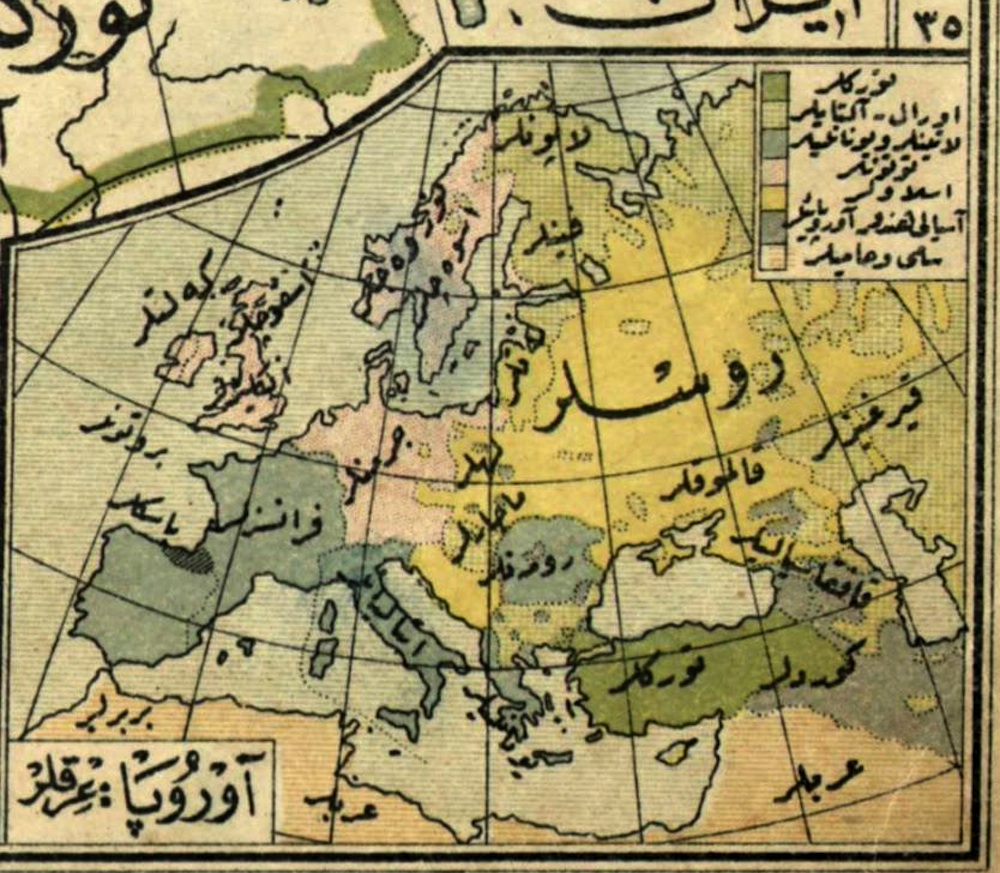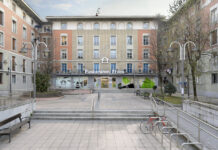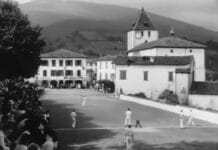This article was translated by John R. Bopp
Thanks to a collaboration* with a Basque who lives between his country, Washington, and New York, we’ve learned of an Ottoman man published in the interwar period (1919-1939) by renowned British cartographers George Philip & Sons (as were most maps published at that time) that has a small secret.
This map, by the way, can be found in an article published on The Afternoon Map website, which is dedicated to maps related with Turkish culture, by Nick Danforth at Georgetown University. In this article, there is an analysis of a map of Europe that someone, most likely a child, overdrew with the Nazi army conquests at the end of 1939, hence its attention-grabbing title.
The secret is not secret because it’s hidden, but rather because in all that information, the little tidbit we’re looking for can go overlooked. The map in question is a representation of the political divisions in Europe in the timeframe between the First and Second World Wars. But in the far right corner, there’s another, smaller map of Europe, in which the different “races” that make up the European continent, parts of Asia Minor, and the north of Africa are defined. We put “races” in quotes because, as can be deduced by looking at the explanation of this tiny map, it’s more a representation of the distribution of linguistic families that can be found in this territory.
So, looking at this map, we find in the extreme bottom right corner of the Bay of Biscay a territory that straddles both sides of the western Pyrenees, a dark spot whose color has no reference in the key. It’s a mystery color that marks that something exists, but the mapmakers didn’t know how to define, important enough to be drawn to be noticed, but strange enough to be left undefined in a map that was about defining just that kind of thing.
It goes without saying that that dark spot, that kind of black hole that’s eaten up the mapmakers’ synthetic capacity, is Basque.
By the way, the wonderful blog we found this map on has also led us to discover something else that’s very interesting, and which we believe deserves its own entry, to be coming soon.
The Aftermnoon Map – 5/10/2013 – USA
An Ottoman Map of Nazi Europe
At first glance this is just another nice old map that some kid ruined with a colored pencil. A second glance, though reveals an incredible anachronism. The pink cross-hatched region corresponds perfectly to the extent of German conquests during the opening years of World War Two (maybe late 1940?). Before the advent of cheaply produced maps or the internet, people had to make their maps last, and would often update them by hand to reflect political changes. A number of Turkish maps show up with Hatay drawn in by hand after 1939, alongside those with a line sketched in between East and West Germany or offending place names vigorously crossed out.
(Sigue) (Traducción automática)
*We’d like to remind everyone again that we’re thrilled to get any type of collaboration that helps us out. We can’t guarantee that we can include everything you send us, but they are all well received.
Last Updated on Dec 20, 2020 by About Basque Country
































